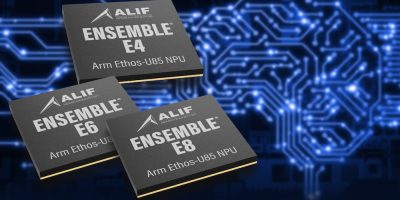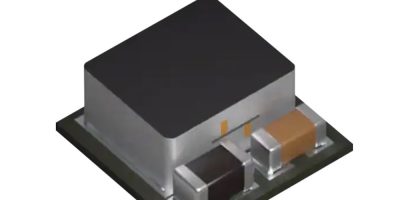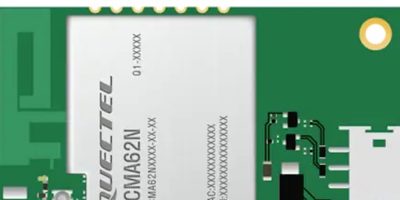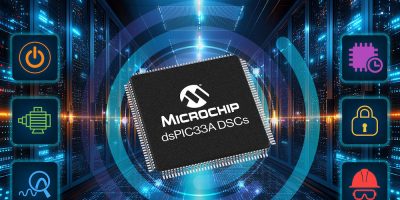Alif Semiconductor has released benchmarks on its latest E4, E6 and E8 microcontrollers and fusion processors.
The new Ensemble devices contain support for up to two MIPI-CSI image sensors. They also include a fully hardware-accelerated image signal processor (ISP) pipeline that operates at up to 60fps at 2MP resolution. This image throughput is enabled with a new wide memory subsystem for extremely fast on-chip as well as off-chip transactions, pushing inferencing speed well below a millisecond when running AI models from internal, highly power efficient MRAM.
The generative AI capability in the Ensemble E4, E6, and E8 devices is made possible by Alif’s future-proof system architecture. Alif is the first silicon provider to offer the Arm Ethos-U85 NPU which supports transformer-based ML networks. As an example of power efficiency, an SLM executed on an E4 device draws only 36mW of power when generating text to construct a story based on a user-provided prompt.
These levels of performance and efficiency enable developers to innovate next-generation products in human-to-computer interfacing, healthcare and diagnostics, robotics, transportation, toys and education, smart homes, and smart city equipment.
Paul Williamson, Senior Vice President and General Manager, IoT Line of Business at Arm, said: “Generative AI is raising the bar for intelligence beyond the cloud, demanding greater performance, privacy, responsiveness, and efficiency. Powered by Arm Ethos technology and supported by our robust software ecosystem, Alif’s latest Ensemble MCUs bring advanced on-device AI capabilities to even the most constrained devices, unlocking real-time insights in applications like health monitoring and wearables. This enables developers to deliver the next generation of intelligent, on-device experiences.”







